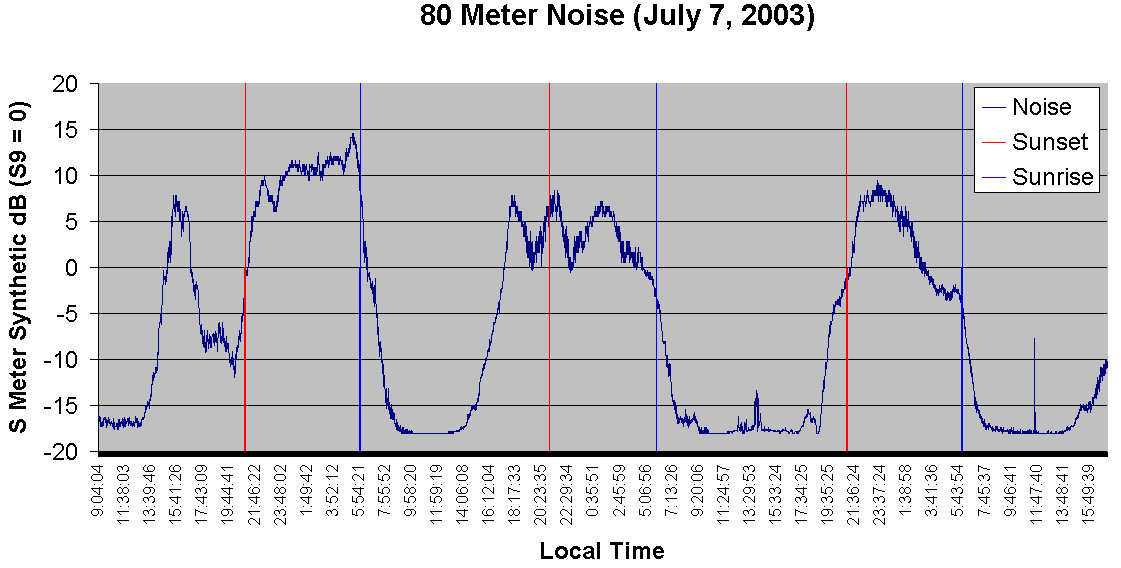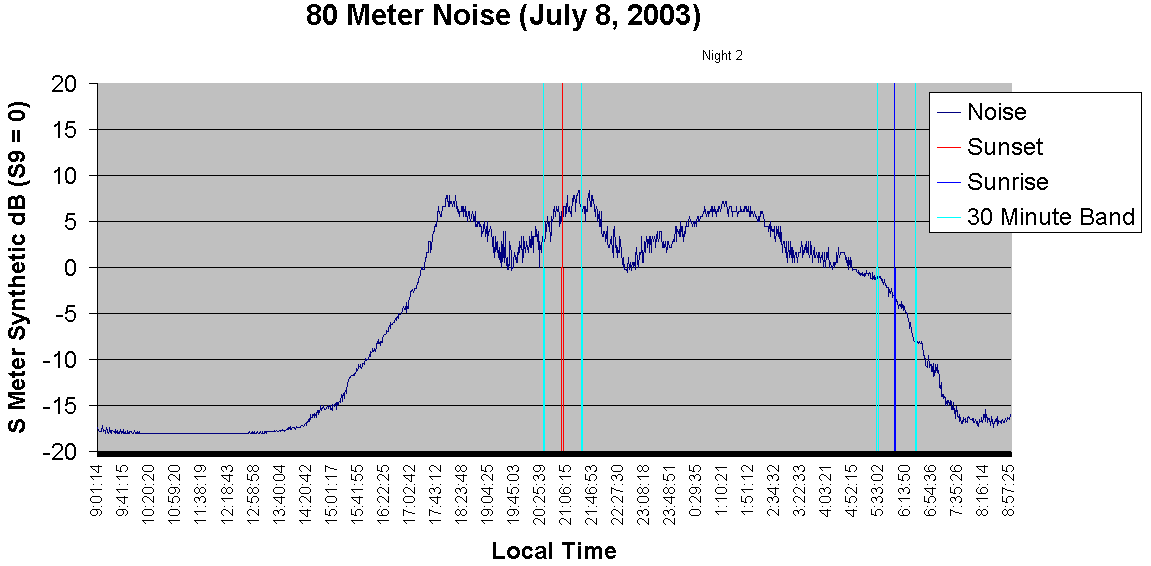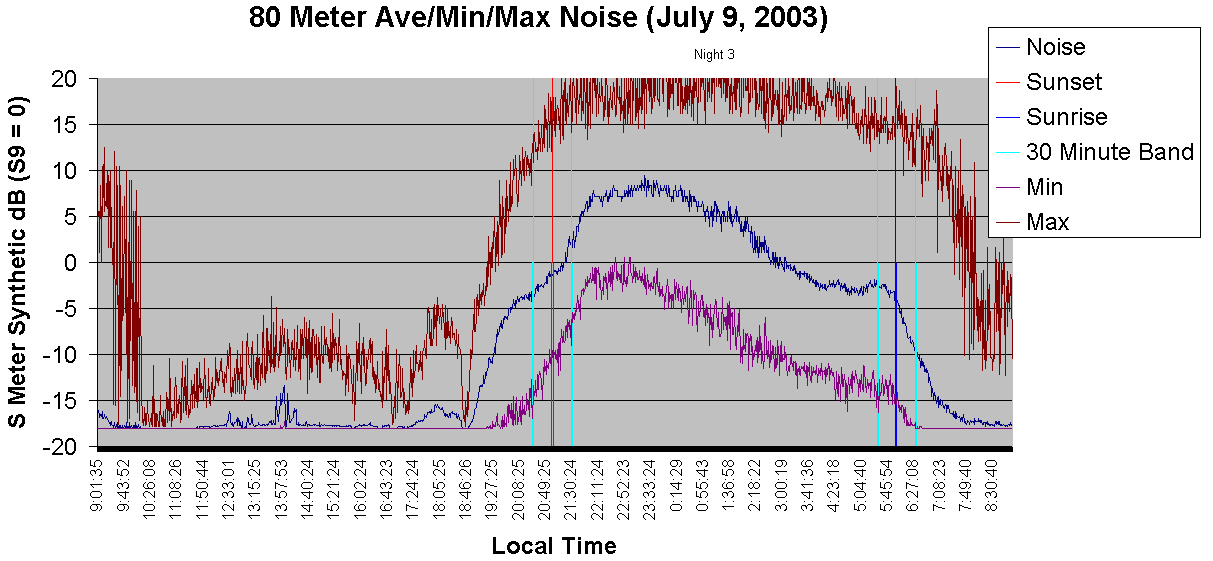 |
| Figure 1 - Three Day Noise Monitoring |
Greg Ordy
My very first monitoring session began at a local time of 9:00 AM (13:00 UTC) on July 7, 2003. The frequency monitored was 3.491 MHz, right below the 80 meter band. Data was recorded for approximately 3 1/2 days. The antenna was my 80 meter inverted vee.
Local sunrise was approximately 5:58 AM, and local sunset was 9:00 PM.
Fig. 1 shows the noise level across the monitoring period.
 |
| Figure 1 - Three Day Noise Monitoring |
Monitoring began at 9:00 AM local time, three hours after sunrise. The times shown on the X-Axis are somewhat arbitrary, automatically selected by Excel.
The vertical red line marks sunset, the vertical blue line marks sunrise. So, each night is captured between red and blue lines. The 0 dB point on the Y-Axis represents an S9 signal level on my radio. Even though the preamp was in the maximum gain position (position 2), the noise bottomed out during the quiet daytime, when the data becomes perfectly flat. Each data point represents 1 minute of data, which is the average of 1200 S Meter readings.
 |
| Figure 2 - Day 1 Monitoring |
Figure 2 captures the first 24 hour period in detail. I have added light blue vertical lines 30 minutes on each side of the true sunset and sunrise lines. The period of time which constitutes the gray line is variable and based upon a number of factors, so these lines are just to help get a sense of the passage of time. The noise tends to peak right before sunrise. This peak happened at the time of a severe thunderstorm. Even though the daylight hours are usually quiet, we see on this day that something created a significant noise peak during the day.
 |
| Figure 3 - Day 2 Monitoring |
As in the case of Day 1, the noise level started to increase several hours before sunset.
 |
| Figure 4 - Day 3 Monitoring |
Figure 4 shows the noise level on the third day. Unlike the first two days, the daylight noise level remained relatively low until about 2 hours before sunset, when it started to rise.
 |
| Figure 5 - Daily Noise Level Overlapped |
Figure 5 overlaps the three monitored days onto a single time daily time line.
 |
| Figure 6 - Day 3 with Min/Max Values Added |
On this last graph, the minimum and maximum S Meter values have been added to the average data from Day 3. The S Meter Lite software logs the minimum and maximum data found in the period. The period is 1 minute, which averages 1200 values. So, the minimum data is the lowest strength value found in those 1200 samples. The maximum is the highest strength value found in those 1200 samples. It's clear that each data sample observers a wide range of noise strength values. Within a one minute period, the signal strength often changes by as much as 35 dB.
Back to my Noise Monitoring Page
Back to my Experimentation Page